The IT playbook for successful data management in retail planning
May 23, 2024 • 7 min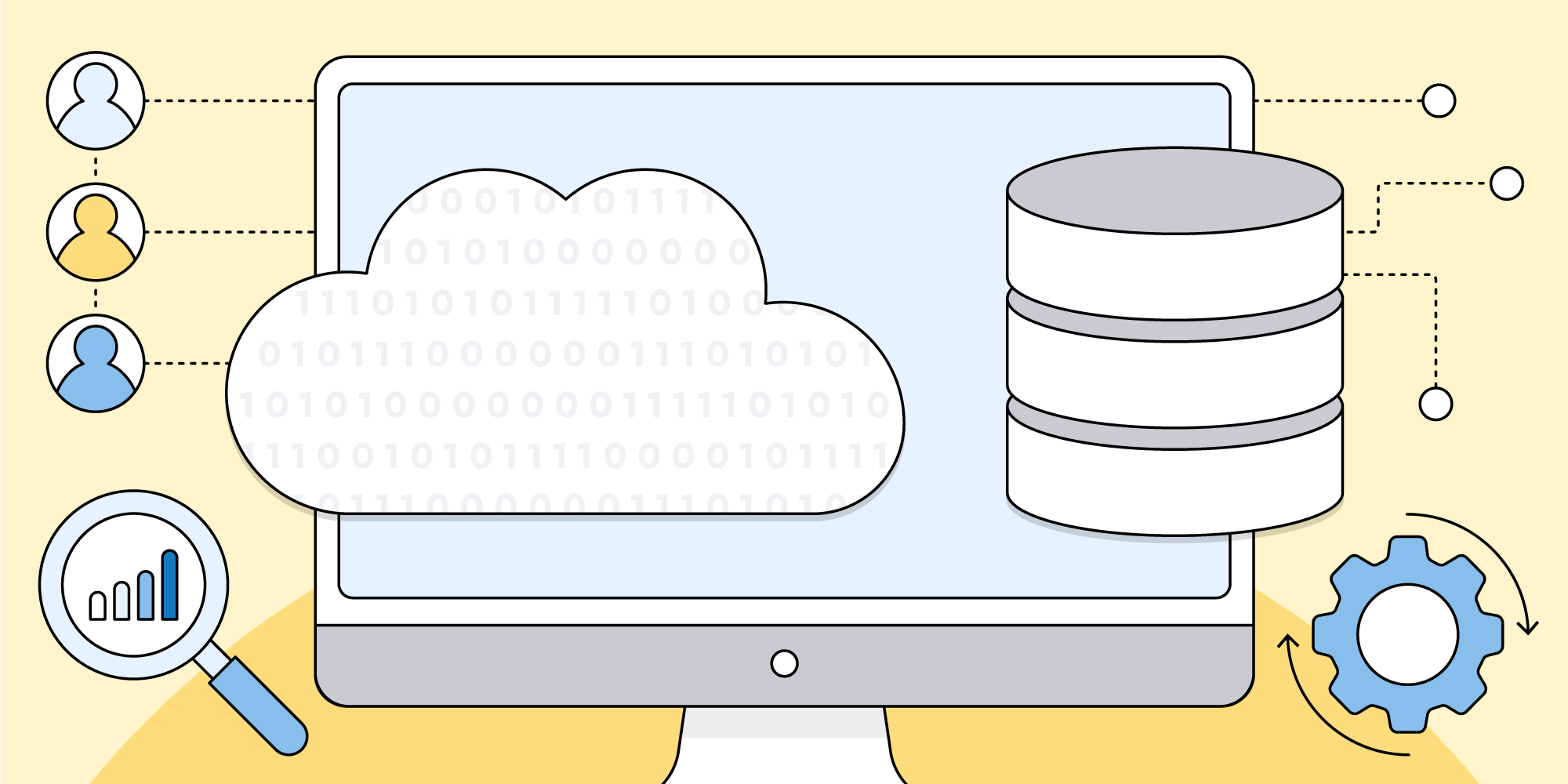
The devil’s in the data
This is an exciting time for IT professionals; technology is rapidly developing, and companies are looking to implement the latest and greatest in supply chain and retail planning technology.
However, some digital transformation initiatives don’t account for IT implementation challenges. They lack a solid strategy for determining the right technology to meet these challenges – especially when it comes to data.
The data issue begs a lot of questions.
- How can companies respond swiftly and accurately to market shifts, even as they struggle with too much or too little data?
- How can retailers best collect, analyze, and share data across functions?
- What does the future of data integration look like, and what tools and strategies exist to support it?
The answers to these questions require the right solutions and the right expertise – and this is why CIOs and IT managers play a critical role in the success of a digital transformation project. IT professionals are the ones who can bring focus to technology selections, identify the best ways to manage and leverage data, and build the tech infrastructure that will drive maximum efficiency and value.
So what should the IT playbook look like, and how can RELEX help?
Here are the data management strategies and technologies that will differentiate mature IT departments at successful companies from those that get stuck in technological ruts.
“We wanted a solution to act as the ‘glue’ to bind our merged operations together and drive us towards our goals of improving availability and reducing inventory. RELEX is exactly what we needed.”
Mara Morandi, CIO, Prénatal Retail
An embedded database for rapid processing
Data is not worth much just sitting in storage – your system needs to be able to pull insights from it quickly to keep your business agile. But many traditional planning systems are sluggish, taking more and more time to move and process data, especially as time goes on.
RELEX was an early developer of a unified data platform that houses a purpose-built embedded database designed to reduce overhead communication and delay.
This database features:
- In-memory computing that stores and processes data in the main memory instead of separate storage, reducing the delay in fetching data for calculations.
- In-database processing performed within the database system itself instead of a separate application, minimizing the need to copy and transfer large amounts of raw data.
By eliminating the need to move data in order to process it, the platform enables greater data-sharing across the entire length of the supply chain with lightning-fast transactional processing and computing capabilities.
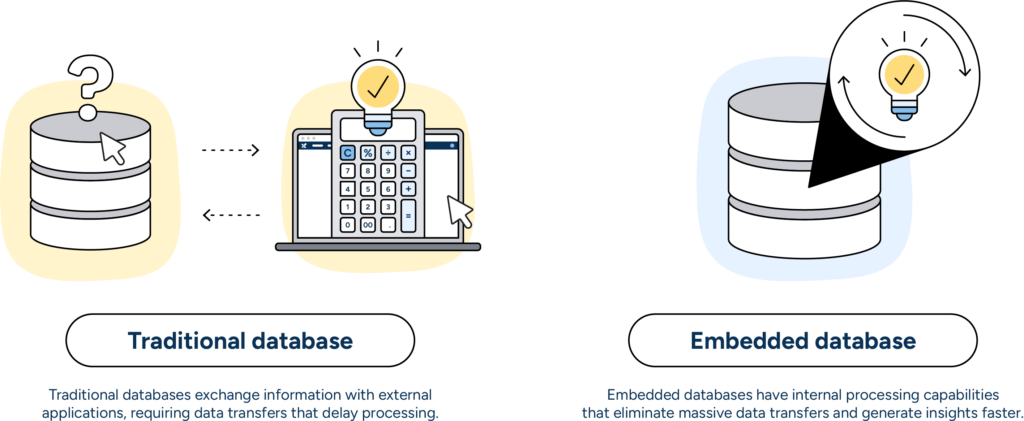
For example, some large retailers have to calculate day-level demand forecasts and replenishment orders for tens of millions of SKUs. With RELEX, they can quickly process internal data, such as the latest transaction updates, as well as external data like weather forecasts. The accuracy and speed of these data insights help retailers generate better plans while saving valuable time.
“Data gravity”- defying processing
“Data gravity” refers to the idea that as data accumulates, it becomes more difficult to move. This, in turn, attracts more applications and services to the data, much like gravity attracts objects. In practice, it means that it becomes more efficient to bring an application to the data for processing, rather than copying or moving the data to a separate database within the application.
For years, RELEX has been ahead of the curve, addressing this challenge through our unified data platform. By teaming up with Snowflake, a premier data cloud provider, we’ve continued evolving our customers’ solutions with hybrid transactional and analytical processing (HTAP).
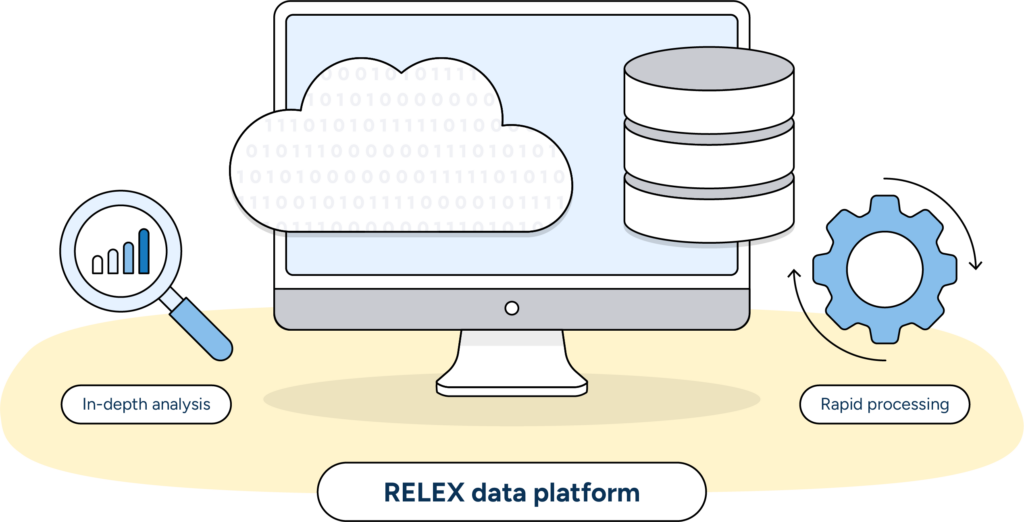
Snowflake provides massive data storage and processing at minimal cost, making it easier to effectively manage existing data and scale with business growth. It becomes a storage space for all data, including “golden records” that have been properly formatted and refined for easy access and distribution across applications.
Through Snowflake integration, RELEX creates an HTAP environment that combines maximum processing power with unlimited data storage, enabling:
- Transactional processing that powers rapid data updates for fast decision-making.
- Analytical processing that delivers enhanced data insights by performing complex calculations and analysis of enormous pools of data.
This HTAP approach enhances the RELEX unified data platform by expanding existing capabilities into an even larger ecosystem. This includes flexible data sharing and collaboration for seamless integration between RELEX, retailers, manufacturers, and suppliers. It offers more robust, integrated solutions that respond to the complex needs of modern supply chains in near real-time.
Integrating data and AI for unified planning
As part of the RELEX data platform, the RELEX embedded database and Snowflake do not operate in a vacuum but form a cohesive part of the larger RELEX solution.
By interfacing with the RELEX AI platform, these databases feed updated, quality data into all retail planning functions. This data-sharing facilitates collaboration and optimizes interdepartmental decision-making for true unified planning.
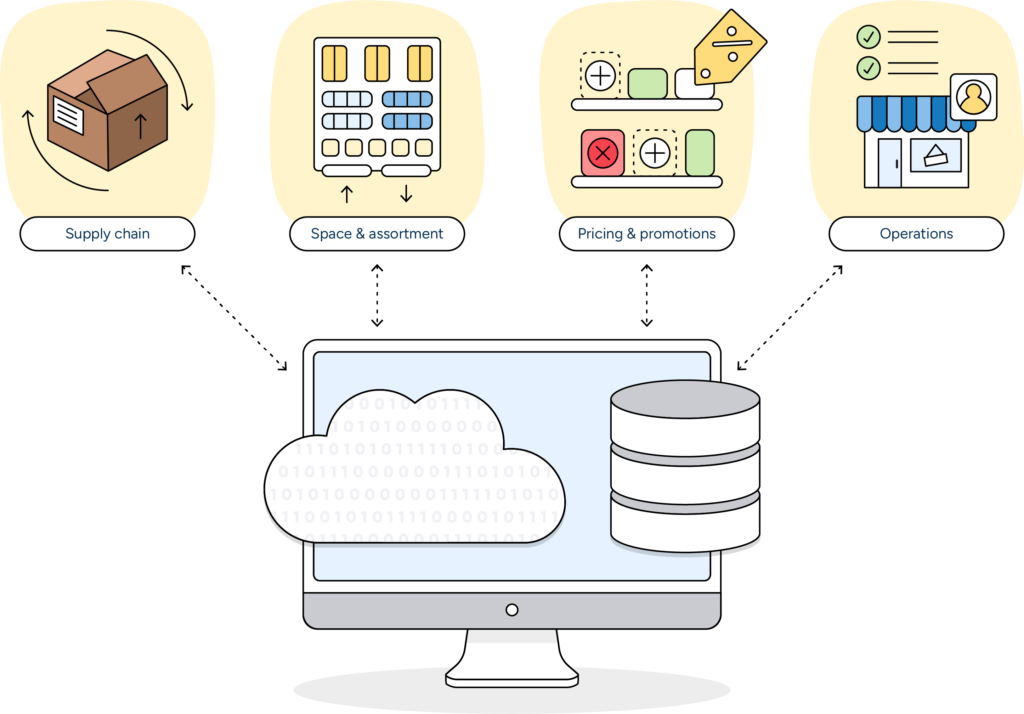
Here’s how unified planning works and why it is the gold standard in retail and supply chain methodology.
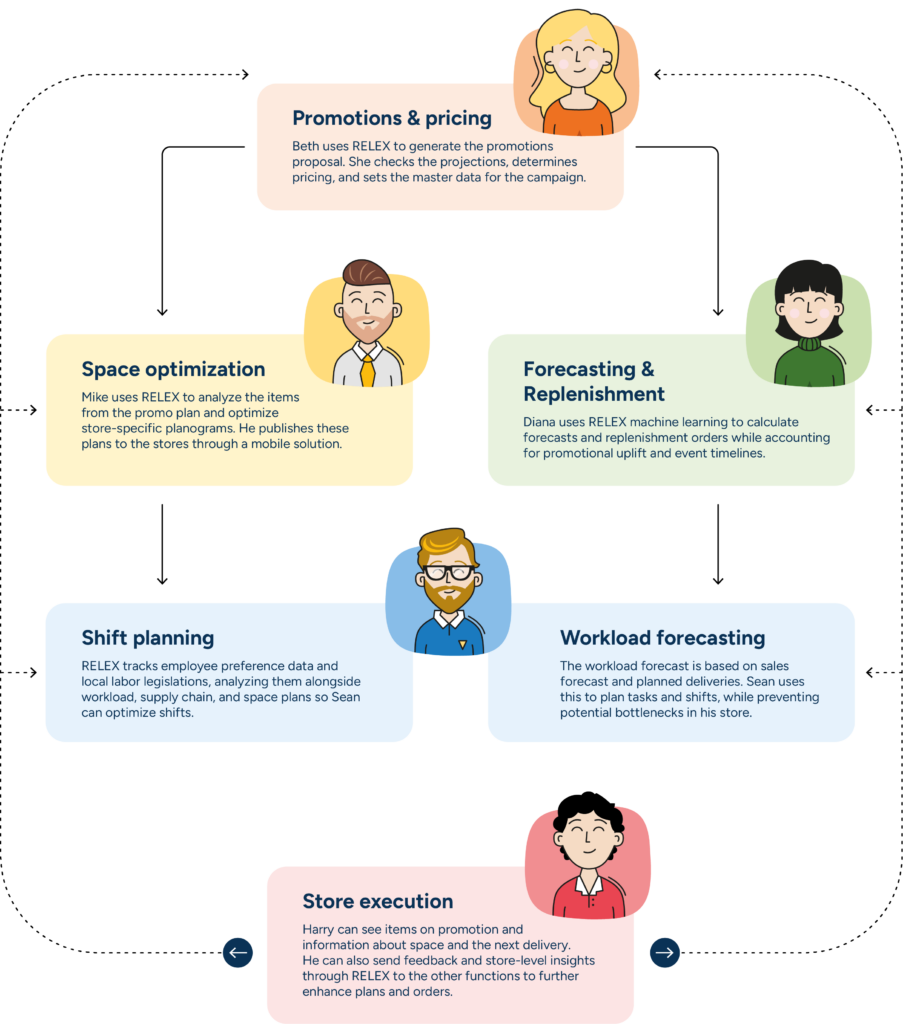
In the example above, the arrows represent the flow of updated data between planning functions. Here’s one path the data can take:
- The buyer creates a promotion plan, which is sent to the merchandizer who uses it to construct optimized planograms.
- The promotion plan is also sent to the demand planner, who uses it to fine-tune the forecasting and replenishment plans.
- The sales forecasts, replenishment orders, and space optimization plans are sent to the shift planner, enabling workload optimization, bottleneck prevention, and shift planning.
- The store execution application establishes a feedback loop between the demand planners and the store associates. This ensures that store-level information about anomalies (e.g., missed deliveries, incorrect merchandising, etc.) is accounted for when reviewing sales data and product performance.
Because all functions exist on one platform, integrate with a single source of truth, and share updates with each other automatically, no department operates in a silo. This boost in efficiency, visibility, and collaboration pays off in lower costs, increased margins, reduced waste, and a better, more consistent customer experience. Plus, the platform features a single point of integration, so data is imported once but can be used across all planning functions.
Moreover, keep in mind that AI is only as good as the data used to train it – and the RELEX machine learning algorithms on the AI platform have massive amounts of high-quality data from which to learn. The longer the solution is used, the more data it gathers. Snowflake expands to hold that data, and RELEX uses it to continue refining its AI calculations and improving outcomes.
Looking ahead to event-based architecture and data ecosystems
RELEX wants to help retailers and manufacturers become planning powerhouses that incorporate information from across their enterprises and extract maximum value from each data point.
To do this, we are constructing an event-based architecture that will bolster our unified planning solution and expand data ecosystems.
An event-based architecture registers, tracks, and incorporates events into planning processes for faster, more accurate responsiveness. An event is anything that should trigger a response from the supply chain. It may be the creation of a new promotion, a disruption in supplier deliveries, a severe weather event, or a sudden spike in sales. All of these events – whether external or internal, planned or unexpected – must be factored into planning decisions quickly.
To support this, RELEX uses Kafka, a data-streaming service that delivers near-live data from across the supply chain so teams can monitor, communicate, and analyze these events. By weaving Kafka into its solution, RELEX not only tightens its unified planning function but also equips planners with up-to-the-minute data that can be processed and distilled into actionable insights for smart, rapid responses.
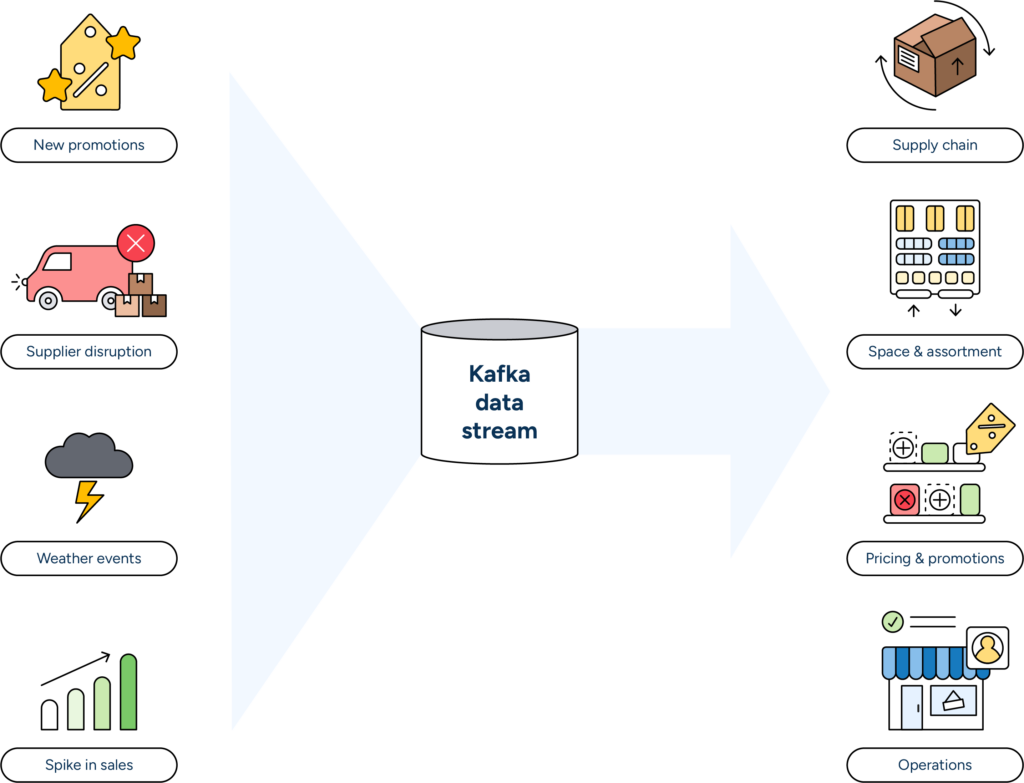
RELEX combines the advantages of rapid transactional processing, significant data storage and analytics capabilities, and near-instant data-streaming services to deliver a data platform that supports adept, responsive planning and collaboration. This level of data control lays the groundwork for future data ecosystems that incorporate more functions, product partners, and business integrations.
Empowering IT decision-makers
At RELEX, we want CIOs and IT managers to know what’s under the hood of our solution that will help them wrangle, distribute, analyze, and unify their data.
- Powered by Snowflake and an in-house embedded database, RELEX provides maximum data processing and analysis at minimal cost.
- Our unified platform enables collaboration and visibility across the supply chain.
- RELEX has the quantity and quality of data to continuously enhance its AI performance.
- Our data management capabilities ensure efficiency and scalability.
- Our forward-looking vision opens doors to expanded data functions and integrations in future data ecosystems.
CIOs and IT professionals need to make the most of their budget, time, and resources when it comes to data management and digital transformation. With RELEX solutions, they can make that goal a reality.





